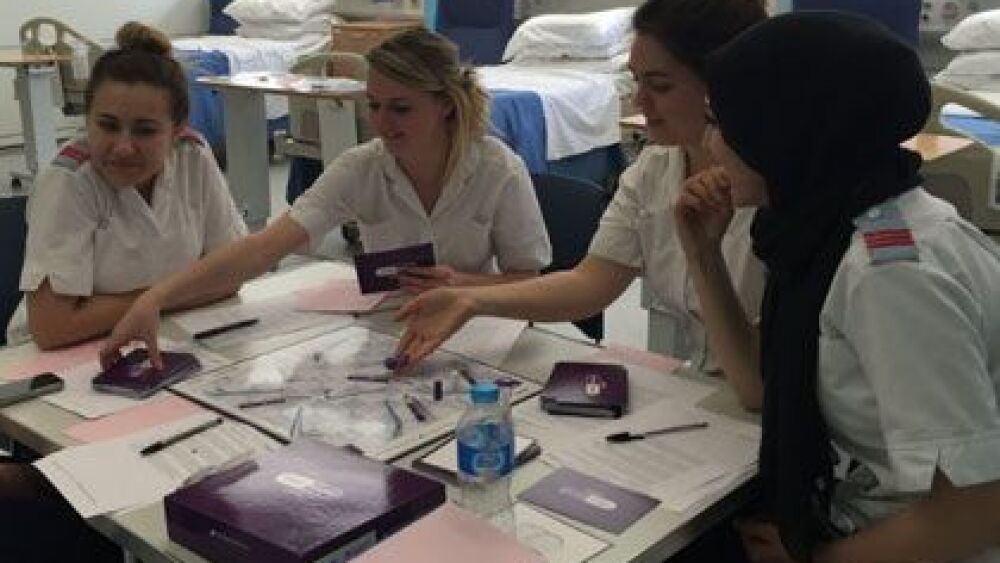By Steve Wirth, Esq., EMT-P
The National Institute of Medicine in its seminal 1999 report: “To Err is Human: Building a Safer Health System” estimated that up to 98,000 people per year die in hospitals due to preventable medical errors. Unfortunately, we don’t have good estimates for the number of fatal medical errors in EMS. But with the significant number of fatal medical errors that occur in the more controlled environment of a hospital, it is safe to say that the numbers of fatal medical errors would also be significant in the less controlled pre-hospital health care environment.
Preventable medical errors are costly, and not just in terms of loss of life or harm to the patient. There are also significant economic costs associated with medical errors such as increased care due to the error, loss of productivity and loss of income, as well as the psychological and physical suffering the patient experiences. The IOM report also points out that health professionals also pay with “loss of morale and the frustration at not being able to provide the best care possible.”
We all make mistakes. Even the most clinically competent and fully engaged medics can make errors in the field that can cost a life or have negative consequences. The key to minimizing the risk of fatal or debilitating medical errors is to develop a multi-faceted approach to risk avoidance that focuses on the patient’s needs at all times. Here are five steps that you can employ to help reduce patient care errors:
1. Make sure your crews are well rested
Studies show that sleep deprivation and not being well rested leads to errors. Several recent ambulance crashes where the driver of the ambulance may have dozed off point to the severity of the problem of lack of rest.
EMS leaders need to emphasize the importance of being well rested. Having policies on reporting to work well rested can help emphasize the importance of this fundamental aspect of effective human functioning. Establishing rest periods and rest areas for on-duty crews can help.
Establishing procedures that allow crew members to take themselves off of a call – without disciplinary action – if they do not feel rested enough to handle it, can also help avoid a tragedy.
2. Emphasize the importance of focusing on the patient
Leaders must establish a workplace culture that emphasizes that the patient is not just a top priority, the patient is our only priority. As our friend Andy Lovell of Gloucester County EMS in New Jersey reminds new employees at orientation: “Patients and incident responses are not an interruption of our day, they are the reason we exist!” Yes, leaders need to constantly remind everyone of this essential point – as simple as it is – to help prevent laziness and apathy from creeping in.
3. Do not tolerate distractions
Put the smart phones away! We live in a world of constant distractions and overflow of information. More EMS agencies are re-examining their policies on the use of personal smart devices and saying no to allowing them while engaged on a call.
Put simply, personal smart phone use while in a moving ambulance or on the scene of an incident should not be allowed. They cause us to be distracted from the 100 percent attention that the patient needs and deserves.
4. Emphasize the importance of teamwork
Patient care is a collaborative process – we all must work as a team to give the patient the best care possible. That means EMS leaders must emphasize the importance of crew members working together.
The days of “it’s your turn to do the patient care and my turn to drive” are long over. Everyone needs to be focused on the patient and we need to check each other’s work. Two sets of eyes, ears and hands on the patient are better than one. Where one crew member may miss an important finding – including the fully engaged medic – the other crew member may pick up on the finding and thus avoid the potential for a medical error.
5. Emphasize non-defensive communications
If we are going to call ourselves professionals, then we must recognize and instill in our crews that each of us has three duties when it comes to collaborative patient care:
- The duty to question ourselves – putting aside self-pride and recognizing our strengths, weaknesses and particularly when we may need help in assessing or treating the patient.
- The duty to question each other – each crew member needs to know that if his/her partner sees something wrong or missing in patient care, that there is an obligation to speak up about it. With that obligation is the equally important responsibility of not responding in a defensive or negative manner when the care or treatment is questioned by the partner. Quality assurance and risk avoidance is most effective when it is practiced in real time during the patient encounter.
- The duty to accept responsibility for our actions. Health care and the prevention of medical errors is not just about being competent, it is also about being honest at all times. EMS leaders must encourage an environment where it is absolutely essential that everyone fess up when they make mistakes and accept responsibility for their actions. Put simply, patient safety is an ongoing responsibility of everyone in the organization.
Bonus point: EMS accountability
Get out on the street and see your system in action! A big problem with EMS is a lack of accountability which comes in part from inadequate or non-existent direct supervision.
People behave better when they are being watched by someone with authority – whether you are a child or an adult. Periodic ride-alongs by EMS leadership not only allows for direct observation that can help prevent medical errors, it also shows the frontline staff that leadership is truly concerned about them and what happens on the street.
EMS leaders can be most effective in preventing medical errors when the staff truly feel that they will not be disciplined or fired for making a mistake. But equally important is to learn from our mistakes and to have a system in place that involves everyone in the prevention of medical errors.
Putting patient safety at the forefront will help identify individual and system problems promptly so that corrective measures can be put in place to avoid a life threatening medical error in the future.
About the author
Steve Wirth, Esq., EMT-P, is an EMS attorney and founding partner of Page, Wolfberg & Wirth, which represents EMS agencies throughout the United States. He was one of central Pennsylvania’s first paramedics and has worked as a firefighter, EMT, paramedic, flight paramedic, EMS instructor, fire officer and EMS executive.
You can reach Steve at swirth@pwwemslaw.com or 717-620-2681.













